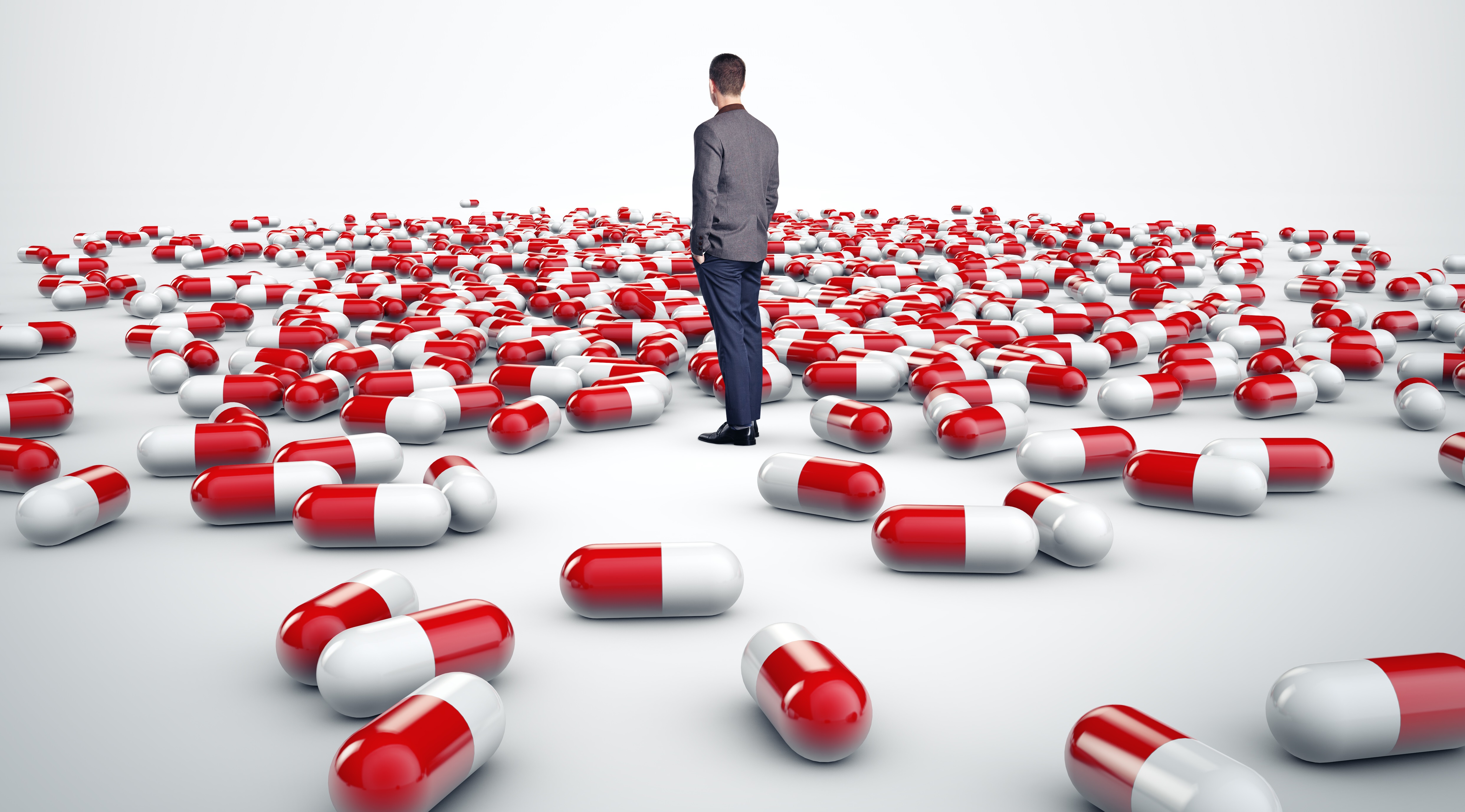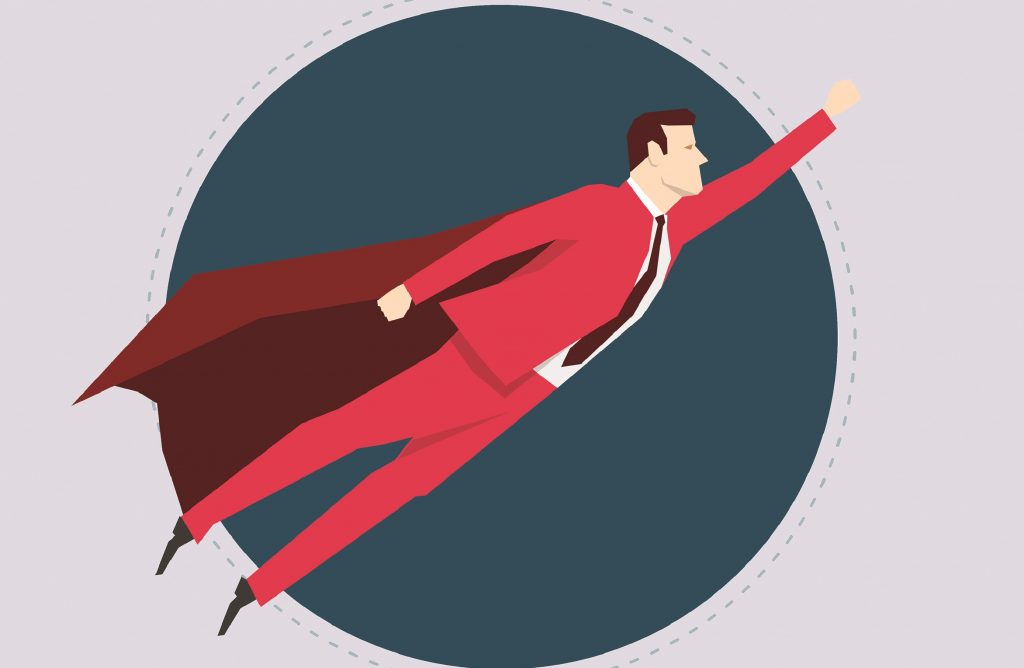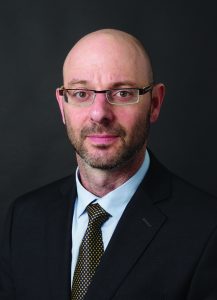
In January 2013, following years of allegations and denials, legendary cyclist Lance Armstrong admitted that he’s been using performance enhancing drugs throughout his entire career. The seven times winner of Tour de France, who up until then was considered one of the world’s greatest athletes, told Oprah Winfrey about the performance enhancing substances he was taking systematically, managing to fool the drug tests again and again.
After a thorough investigation Armstrong was convicted based on circumstantial evidence and was stripped off all his titles and Olympic medal, yet kept an interesting point of view to the whole affair. True, he did apologize repeatedly, describing himself as a “flawed character”, but at the same time told Winfrey he couldn’t have won without doping. “Not in this generation… I didn’t invent the (drugs) culture, but I didn’t try to stop the culture.” And there, maybe, lies the rub: the assumption that without drugs you cannot win the race. For Armstrong it was a prestigious bike race, for others it’s the race of life.
Armstrong is right, of course. It’s not him who invented the performance enhancing drugs culture which is embedded in our life far more than just sports. In recent years there are more and more attestations of normative people using enhancing substances to boost their cognitive and physical abilities, be it in schools, work or even during a one’s military service. Most do it without a second thought, like others will put on glasses to see better. But taking performance enhancing drugs as if they were “brain Viagra”, without an actual medical need, comes with a price – personal, social and cultural.
Let’s go back for a second to sports. It’s hard to find a big international sports event which did not get mentioned as involving a doping offense. Armstrong might have stood out due to his high public profile, but he wasn’t the only one using these substances in the Tour de France. In fact, in the years he won the race, 1999-2005, 87% of the first ten to cross the finish line were accused or caught in using forbidden drugs. And not just Tour de France: many other athletes admitted or got caught using performance enhancing drugs.
The first known user of performance enhancing substances in sport is probably American marathonist Thomas Hicks, who won the gold medal in the 1904 Olympic games in St. Louis. Hicks took strychnine and brandy before the race and collapsed right after crossing the finish line. He was followed by many others, among them Canadian athlete Ben Johnson, who set a 100 meters world record at the 1988 Olympic Games but later on was disqualified for doping, or sprinter Justin Gatlin, who holds the title Fastest Man in the World after dethroning Usain Bolt in the 2017 IAAF World Championship, but was also banned in 2006 from the track for eight years after testing positive in a doping test. In January 2016, during the Australian open, Russian tennis player Maria Sharapova failed the drug test by testing positive to meldonium, a heart medicine that improves the blood and oxygen flow.
Cocaine for the Poor
Stress, intense training routine and constant competing take their toll, especially in the extremity of athletes’ life, but not just in theirs. There are plenty of more common sides of life where all of us go through the same challenges. We are still teenagers when we deal with the stress of school finals, or college exams, combined with work and supporting ourselves financially. It’s almost not surprising that many youngsters choose to take Ritalin, the mega-popular prescription medicine taken by millions whom might not even know that is was originally meant to treat ADHD.
Ritalin is one of the medicines often referred to as “smart drugs”, the supposedly more dignified name of stimulants and enhancing drugs. Among the active substances in smart drugs one can find methylphenidate (in Ritalin and Concerta) and amphetamine (in Adderall and Attent, both meant for treating ADHD).
The increased use in Ritalin and other ADHD meds is a well known phenomenon in schools around the US, to the level that these meds are sometimes called “cocaine for the poor”. In 2006, almost 7 million Americans were excessively using prescribed medications, such as Ritalin and other stimulants – a higher number than people who used cocaine, heroin, MDMA and hallucinogenics combined together. These numbers were already showing an 80% increase in drugs use compared to the year 2000. In 2007, more than 1.6 million Americans were using enhancing drugs for non-medical reasons and almost 4% of high schools seniors in the country reported using Ritalin without prescription at least once. In the same year American official statistics showed that in some campuses a quarter of the students said they were using performance enhancing drugs. In 2011, the US Department of Health and Human Services estimated that 5% of Americans age 18-25 were illegally using these drugs. In a survey taken that year in Michigan one out of 10 children age 13-17 admitted they used performance enhancing drugs in order to improve their grades. Since then, the numbers have only been going up.
From Hitler to the Yakuza
Using performance enhancing drugs is not exclusive to schools and sports and is well known in armies and terror groups. In 1936 a German pharmaceutical company called Temmler produced a new drug called Pervitin, made partly with methamphetamine, an addictive stimulant, nowadays known more for being part of crystal meth. Back in 1936 Pervitin was legal and sold in pharmacies. It quickly became popular among citizens of the stressful and competitive environment of the pre-World War II Germany. Later on, in the very early stages of the war, Hitler understood the tactical advantage in giving the stimulant drug to Nazi soldiers before combat. Before the invasion to France, German forces were given approximately 35 million Pervitin tablets, hoping to assist with a quick invasion. The results are known, although unclear if they’re related to the drug or not: Germany shocked the world when it occupied France within four days, a much greater success than what Germany managed in the entire World War I.
Subsequently, the Nazi army adopted a different version of meth and developed the Yaba, a mixture of methamphetamine and caffeine, which is common even today, mostly in east Asia. After the war the Japanese army was left with a big supply of the meth pills, and those were sold to Japanese citizens under the name Shabu. In the early 50’s Shabu was outlawed, but its use remained, especially by members of the organized crime syndicate, the Yakuza. During the Vietnam war American soldiers were also exposed to meth, and some of them brought it back home with them, increasing its popularity in the US.
Africa has also its share of using stimulative drugs in war. In a continent where hundreds of thousands of children are forced to join armed militias, the advantages of enhancing drugs are clear. In many military encampments around the continent giving drugs to children – some not yet 10 years old – is a way to give the warlords complete control over their young subordinates.
The use of drugs for combat did not skip the Muslim terror organizations either. ISIS terrorists caught after an attack in Paris two years ago were using the stimulant Captagon. The Hezbollah used the drug in a different way: it had it its own drug manufacturing line which was used to fund the organization’s terror actions. Terror organizations are of course an extreme example but it serves to show the unimaginable easiness of using pills to change the game rules.
Celebrating Life
It was probably only a matter of time until the phenomenon of enhancing cognitive abilities with a smart drug will reach the job market. In the modern work life, when you could be expected to have a 12 hours workday while having a family and running a household, when you find yourself constantly available for your work on email and WhatsApp and everyone can see when you’re online or not, enhancing drugs are just another way to survive in the jungle.
“In the past an employee might have had five espressos to feel focused and alert, nowadays he or she takes enhancing drugs,” says Orly Zadok, employment psychology specialist, consultant and owner of career consulting company. “Social expectations today are extremely high: we’re expected to be excellent employees and work long hours, but also to have a perfect family, study and enjoy a social life. This race leads to a lot of stress which leads to a lot of young people taking drugs, stimulants, or the other way around, depressants, to keep up with the expectations. Something in the western culture causes this.”
As if dealing with what society expects us in this multitasking era is not enough,we have to deal with our own high expectations. If in the past we compared ourselves to our neighbors or to our colleagues, today we can compare ourselves to hundreds, if not thousands, Facebook friends, most of which often we’ve never met in real life. They of course make sure to document themselves in their brightest moments, which we can never beat. This is, one can say, the glorification of life.
“It feels like the whole world is there, waiting for us, that everything is possible, and of course, everyone wants more, of everything,” says Zadok. “The opportunities are supposedly unlimited – you can get education online, you can work overseas, you can work from home. We’re also turning impatient, we’re so used to click and get what we want.”
But it’s actually because of this “everything is possible” feeling, the path to choose is not so obvious. “In the past people would deliberate if to study medicine, law or teaching, today they will ask themselves whether they want higher education at all. The benefit of education is no longer so clear, and to have a graduate diploma no longer equals to an immediate good job,” explains Zadok. “The definition of professions is also not so clear anymore. Nowadays you can make a living by blogging, by selling things through photos on your Instagram, by developing an app.
“The employment world is completely changed, and this change is often leading to taking depressants to escape the stress, or stimulants in order to be able to deal with the stress, the vagary and with the multitasking, and to be able to finish the day that starts early and ends in midnight. Taking drugs just to deal with the daily stress has become legit. Young people today are more open to it, they don’t see taking stimulants as such a big deal. I also see it in my clinic, it’s completely out in the open. I see more and more young people, around 25, with depression, feeling they don’t keep up with expectations and that they can’t find themselves, far more than compared to 15 years ago. Lots of these young people are looking for a relief and in step the smart drugs.”
From High To Low
ADHD medications sales is rapidly growing, with an annual turnover of 12.9 billion dollars in 2015. Ritalin is rated by the American Drug Enforcement Administration as the most stolen medicine since 1995. Unlike in the US, in Israel there are no official data regarding the use of smart drugs, but experts confirm that it’s a growing phenomenon. True, it’s still a prescribed medication, but it’s not so hard to get, even without the right papers, starting with help from friends who have the prescription, through lying to a doctor to get one, or simply through the black market, where drug dealers sell stimulants like any other drug. The smart drugs were never so easy to get.
In an era of scientists working on an improved version of humanity, using nanotechnology to prolong life and stem cells and robotics to improve mental and physiological abilities, it seems that the mass desire to enhance abilities by taking a pill just makes sense.
But do smart drugs really enhance abilities for people who don’t officially need them? Depends who you ask. A survey published two years ago in the European Neuropsychopharmacology tested the influence of the active substance Modafinil (used for wakefulness promoting in people with disorders such as narcolepsy, who deal with daytime sleepiness) on people without the disorder. It found that the influence was correlated to the level of challenge. The harder the challenge the better the influence of the medication. On the other hand, the Journal of Cognitive Neuroscience published that same year a collection of 48 researches, stating that people who do not have ADHD but still use the disorder meds, manage to improve their cognitive function only by little.
So much for the benefits. What about the possible harm? “Stimulants, including smart drugs like those meant for ADHD and hyperactivity, are addictive: they work mainly on enhancing concentration and the activity of the neurotransmitters in the brain, dopamine and noradrenaline, which play a major role in our mood, satisfaction and our wakefulness,” explains Dr. Shaul Lev-Ran, psychiatrist, physician-in-chief and director of the Dual Disorders Clinic, Lev Hasharon Mental Health Center. “The question when does the use of stimulant become a use disorder depends on three parameters: one is a physical parameter – with time the body gets accustomed to a certain substance and then it takes more substance to reach the same effect, and in addition, when the person will stop using he will show rehab symptoms. The second parameter is cognitive: when a person is obsessively thinking about the stimulative pill, and the third parameter is behavioral: when the person keeps using despite the damages, which could be social, psychological of physical, such as not being able to sleep for 24 hours. When a person shows signs of these three parameters, we talk about a use disorder.”
According to Dr. Lev-Ran, drug abuse is when the patient ignores doctor’s orders, increases the dose or changes the times or the way the medicine is taken (for example snort it up instead of oral intake, for an intensified effect). “The more you stray from the medical instructions, the more risk to a use disorder and the mental and physical symptoms that go along with it, such as higher blood pressure and heart rate, less appetite, higher pulse, sleep disorder, anxiety and in some extreme cases also manic behavior and psychosis, losing touch with reality”. Add to these what comes at the end: the drug high dissipates and is followed by the “down”, and with it actual lower cognitive functioning.
Q: are there people who are more prone to performance enhancing drugs abuse?
“Generally speaking, the risk for drug abuse is bigger in people with certain personality traits, like impulsiveness, thrill seeking and with challenged emotional balance. Additionally, if there is a psychotic disorder in the background, such as social anxiety, depression with high self judgement, etc., there’s more of a risk for a drug abuse. When a person takes on a lot of tasks, without much chance to be able to do all of them to begin with, then that person will need assistance to close the gap and that’s when we will see drug abuse.”
It Takes Running To Stay In Place
Dr. Lev-Ran has seen many patients who use enhancing drugs in their jobs, without any prognosis. “I see both how easy it is to get the substance and how easy it is to get to abuse, due to the stress and the competitive workplace”, he says. “These employees feel they need to prove themselves worthy. Some of them work for long intense hours in front of the computer, which demands keeping a sharp mind, sometimes working across borders with opposite working hours. After work hours they’re expected to be helpful at home with the kids. Just applying for jobs is getting harder and harder. People use stimulants just to pass the assessment tests and tasks, but they quickly move from use to a use disorder. I see it almost every day. Lots of people who suffer from depression or anxiety and then I realize they have an acute use disorder or they’re addicted to stimulants.”
According to the 2013 Federal Mental Health and Substance Abuse Administration report, the number of ER visits caused by a non-medical use of stimulants among 18-34 years old has tripled itself between 2005-2011, and was 23 thousand. The number of people who admitted to rehab centers stating stimulants as the main cause for their addiction, has jumped 15% between 2010-2012, compared to the previous three years period. In 2012, more than 2.5 million adults in the US were prescribed with smart drugs to treat ADHD, a rise of 53% in four years. Among the 26-34 years old the number has doubled.
These numbers are no surprise to Dr. Avi Schneider, sociologist and the head of organizational development graduate program in The College of Management Academic Studies, who specializes in the 21st century job market. “We live in a hyper-reality. In the hi-tech world technologies change every year to a year and a half in some extreme cases. It means endless learning and working hours, it’s like racing with jet planes while we walk,” he says. “Radio’s technology was dominant for 68 years. The mini-disc technology was dominant for four months. 68 years are long enough time to learn a profession and get really good in it, but in a reality in which every few months the technology changes, the skills and comprehension demanded from the employee are unreasonable.
“Remember what did the red queen tell Alice in Through the Looking Glass? ‘it takes all the running you can do to keep in the same place’. Some people will let go and leave the race, live an alternative life in some communal farm in the desert, but other people will need medical measures to stay tuned to the crazy rhythm of today’s life. We try to change ourselves instead of changing the reality. 50 years ago one breadwinner would work eight hours a day, make okay money and could afford a house have a family. Today two people work 12-14 hours a day plus some help from the family and barely manage to keep their balance in the checking account.”
In a reality like this, says Schneider, the stimulants in the job market were only the natural course of things. “Ritalin has been is schools for over 15 years now, it’s completely mainstream. My students speak about Ritalin as an obvious thing, it’s part of the discourse. And as soon as something becomes normative it spreads to all areas of life. In this sense, the job market is only falling in line with the rest of society, it’s trivial. It’s a virtual reality supported by chemicals.”
Pushing the Edge
It’s very likely that with the growing life expectancy stimulants consumption will only grow. Scenarios in which a person has to keep working after retirement age because his or her pension is not enough, and has to compete with a 20 something year old, are not so unfounded. Taking stimulants to enhance performance is only a short way from there.
But stimulants influence different people in different ways. Studies show for example, that modafinil, a wakefulness promoting substance, significantly improves the cognitive performance of people with relatively low IQ, but barely influence, if at all, people with high IQ. Methylphnidate can notably change the work memory of users with bad memory, but will hardly do anything for people who have good memory to begin with.
Smart drugs enable people who can’t take the pressure of the race to be able to stretch their abilities in school and work to the edge, work and study harder and longer. Positions that seemed intimidating to some people before will all of a sudden open up for them. But in an already achievements driven competitive society, enhancing abilities with a pill and turning employees to super-employees might make our society non human.

It’s unlikely to think that employers – even if they will rejoice to have more effective and efficient employees – will demand their employees to use drugs. People who will raise the – already high – bar then are not the employers, but the more ambitious employees, or those who can’t take the social pressure and their own expectations, that will use smart drugs.
Working to the edge could be the new norm. Even if we will disregard for a minute the harm caused by using drugs for no medical reason and the addiction risk, one must ask: is it okay that one student or employee will have an advantage over the other, just because they used a drug to enhance their performance?
It didn’t take long before the ethical aspect of using smart drugs became an issue. In 2011, after an extensive discourse, the Israeli Medical Association Ethics Department published new guidelines, entitling doctors to prescribe Ritalin or other concentration and memory enhancing medications per the request of the patients and up to the physician’s judgement – even if there is no apparent medical need to it. That, as long as the medication will give the healthy patient a needed benefit and if “the risk in it is lenient.”
“The discussion started with the question whether going through a plastic surgery is legitimate. After all, we find plastic surgeries reasonable and this is actually the same category. You go through a plastic surgery to become better looking – and you take smart drugs to boost your cognitive ability,”, says Dr. Tami Karni, a surgeon in Assaf Harofeh Hospital and chairwoman of the IMA Ethics department. “Clearly you cannot just invalidate the entire smart drugs discipline, and it was time to set the rules to cognitive enhancing drugs, be it for better concentration or staying awake for longer times.”
Q: It could have harsh implications over the society.
“If a scientist will manage to work without stopping and invent medications that will change the world, thanks to the fact he was using performance enhancing medicines, then you have a positive influence. But indeed there is a danger lying in a world where everyone can fulfill themselves, there’s no doubt there will be a substantial change in society. Is it a good thing or a bad thing? from the doctors’ point of view the question is what’s the harm from the use, and if the advantage is greater than the disadvantage.”
Another question that came up in the ethics discussion was that of social equality: “We asked ourselves should we give these smart drugs to the entire population? In a country with a public health system, should these drugs be available to everyone?” says Dr. Karni. “After all, the cognitive enhancing medicines were not meant to treat sick people, but rather improve the abilities of a healthy person. Therefore, the thought was that it shouldn’t be subsidized by the public health system, because the meaning of funding it to the public might be preventing it from people who will need it medically, for treating real ADHD. On the Other hand, not subsidizing it will create a social bias which will mean that only people with money can improve their thinking abilities, while people who don’t have the money cannot become smarter. The derived result will be that people who can afford the medicine will become wealthier and wealthier, while people who can’t afford it will keep living with no money.”
A Week With No Sleep
The Ethics Department tried to offer a solution to the social bias problem. “The paper we published stated that the traditional role of a doctor is to look after their patients health – and life quality,” says Karni. “Since we expect that life quality will improve, we enable treatment that improves life quality and not just heals. And by the way, nowadays UNESCO defines health as life quality. Naturally, this is true as long as the benefits are greater than the risks. The doctor’s duty is to look through every request to cognitive enhancement, and if there’s a need – to prescribe the medication. But the doctor is not obliged to do it.”
Q: But this makes getting a prescription to stimulants very easy. Anybody can tell a story.
“Can I tell you for sure there won’t be doctors who might be fooled? of course there will be. People know how to trick the doctor. But the guidelines come from the assumption that the connection between the doctor and the patient is genuine. Requests that don’t match the medical conventions will be duly considered. In those cases the patient will sign an informed consent. The responsibility is shared between the caretaker and the patient. When a person wants to work a week without sleeping it’s unlikely the doctor will help him, because we know there are risks, consequences to life without sleep.”
Q: What about overuse of the smart drug or addiction?
This is already a cultural and legal matter, regarding what is allowed and what is not. The doctor is not a detective, he can give instructions regarding the dose and how to use it, but he cannot watch over the use or make sure the medication is not sold to friends or the black market. The doctor cannot have control on possible abuse.”
However, Karni thinks the approach should be far more strict when it comes to self enhancing in workplaces. “The student period in our life is limited, it’s a time of lots of stress and it passes,” she explains. “But using drugs for demanding jobs can hurt the health of large crowds, and for long periods of time. That would mean more and more people using unnecessary medication with serious side effects.”
Will the performance enhancing drugs discourse come out to the open in workplaces like it has already done in schools? “If I had to guess I’d say it sounds reasonable,” says Dr. Schneider. “But maybe humanity will be clever enough to change course.”






